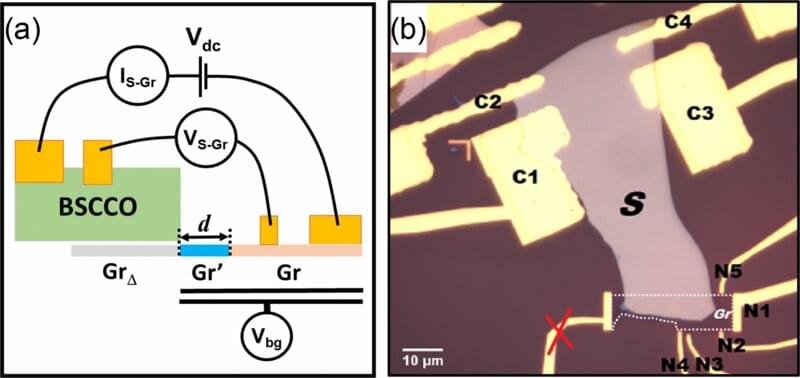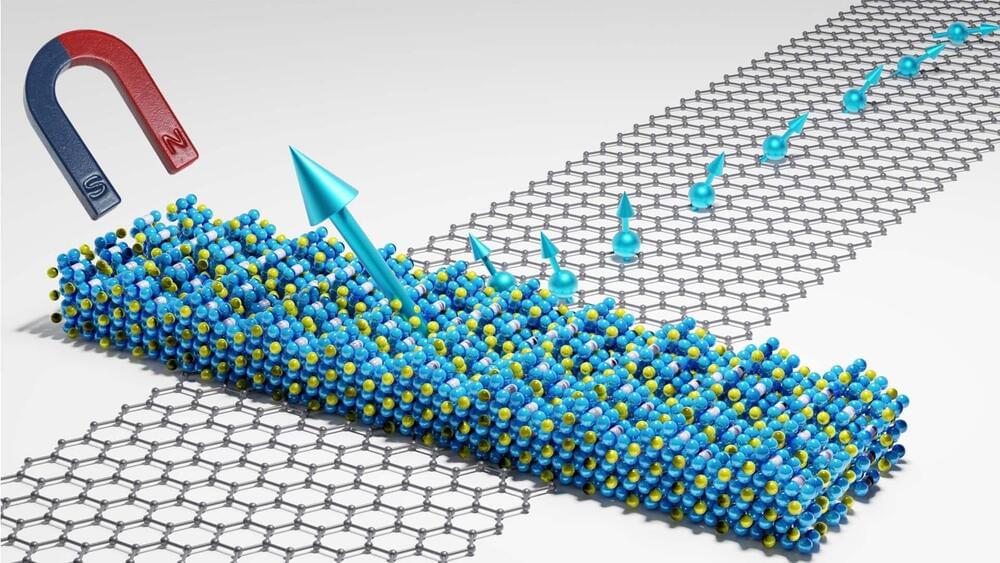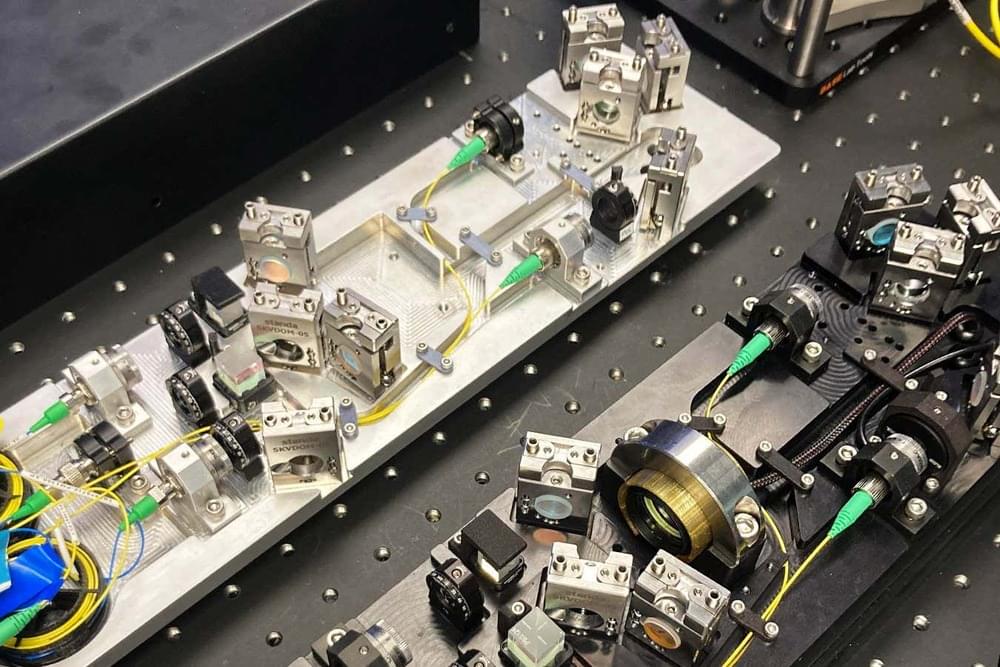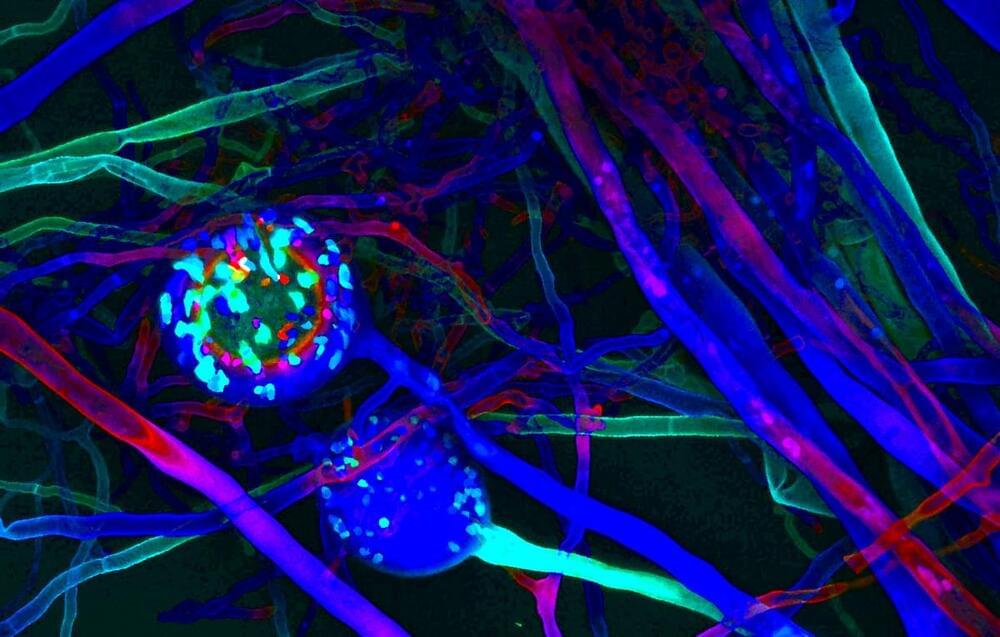Open-standard computer chip instructions could help speed up futuristic technology like autonomous cars and quantum computers.



This could lead to chat gpt infinite ♾️ ✨️
Machine learning is a fascinating and exciting field within computer science. Recently, this excitement has been transferred to the quantum information realm. Currently, all proposals for the quantum version of machine learning utilize the finite-dimensional substrate of discrete variables. Here we generalize quantum machine learning to the more complex, but still remarkably practical, infinite-dimensional systems. We present the critical subroutines of quantum machine learning algorithms for an all-photonic continuous-variable quantum computer that can lead to exponential speedups in situations where classical algorithms scale polynomially. Finally, we also map out an experimental implementation which can be used as a blueprint for future photonic demonstrations.

Developing new quantum devices relies on controlling how electrons behave. A material called graphene, a single layer of carbon atoms, has fascinated researchers in recent years because its electrons behave as if they have no mass. For decades, scientists have also been interested in high-temperature superconductors: ceramic materials where electron interactions yield a macroscopic quantum state where electrons pair with each other. They do so at a temperature above the usual superconducting temperature of metals, which approaches absolute zero.
In a recent study published in Physical Review Letters, researchers from the SUNY Polytechnic Institute, Stony Brook University and the Brookhaven National Laboratory in the US, along with Aalto University in Finland, demonstrated a new electronic device that employs the unique ways in which electrons behave in these two materials— graphene and high-temperature superconductors.
The experiment, led by Sharadh Jois and Ji Ung Lee from SUNY with the support of theoretical work done by Jose Lado, assistant professor at Aalto, demonstrated a new quantum device that combines both graphene and an unconventional high-temperature superconductor.
Quantum computing and simulations are creating transformative opportunities by exploiting the principles of quantum mechanics in new ways to generate and process information. It is expected that a variety of areas ranging from day-to-day activities to making advanced scientific discoveries are going to benefit from such computations. Several early stage applications of quantum computing and simulation have already been demonstrated, and these preliminary results show that quantum computing and simulations could significantly accelerate the deployment of new technologies urgently needed to meet the growing demand for energy while safeguarding the environment.

The discovery of new quantum materials with magnetic properties could pave the way for ultra-fast and considerably more energy-efficient computers and mobile devices. So far, these types of materials have been shown to work only in extremely cold temperatures. Now, a research team at Chalmers University of Technology in Sweden are the first to make a device made of a two-dimensional magnetic quantum material work in room temperature.
Today’s rapid IT expansion generates enormous amounts of digital data that needs to be stored, processed, and communicated. This comes with an ever-increasing need for energy—projected to consume more than 30% of the world’s total energy consumption by 2050. To combat the problem, the research community has entered a new paradigm in materials science. The research and development of two-dimensional quantum materials, that form in sheets and are only a few atoms thick, have opened new doors for sustainable, faster and more energy-efficient data storage and processing in computers and mobiles.
The first atomically thin material to be isolated in a laboratory was graphene, a single atom-thick plane of graphite, that resulted in the 2010 Nobel Prize in Physics. And in 2017, two-dimensional materials with magnetic properties were discovered for the first time. Magnets play a fundamental role in our everyday lives, from sensors in our cars and home appliances to computer data storage and memory technologies, and the discovery opened for new and more sustainable solutions for a wide range of technology devices.

This paper presents a relevant contribution towards an effective and convenient “Science 2.0” universal computational framework to achieve deeper cognitive intelligence at your fingertips and beyond. Computational information conservation theory CICT can help us to develop competitive applications and even advanced quantum cognitive computational application and systems towards deep computational cognitive intelligence. CICT new awareness of a discrete HG hyperbolic geometry subspace reciprocal space, RS of coded heterogeneous hyperbolic structures, underlying the familiar Q Euclidean direct space, DS system surface representation can open the way to holographic information geometry HIG to recover lost coherence information in system description and to develop advanced quantum cognitive systems. This paper is a relevant contribution towards an effective and convenient “Science 2.0” unive.
Get a Wonderful Person Tee: https://teespring.com/stores/whatdamath.
More cool designs are on Amazon: https://amzn.to/3wDGy2i.
Alternatively, PayPal donations can be sent here: http://paypal.me/whatdamath.
Hello and welcome! My name is Anton and in this video, we will talk about the suggestion that horizons from black holes and the expansion of the universe cause the quantum collapse into reality.
Links:
https://arxiv.org/pdf/2301.00026.pdf.
#quantumphysics #blackhole #universe.
0:00 What this study is trying to solve.
2:05 Applying Einstein principles to Quantum Physics.
4:00 Do black holes server as observers?
5:00 What about the edge of the universe?
6:45 Does this prove universe is conscious? (no)
Support this channel on Patreon to help me make this a full time job:
https://www.patreon.com/whatdamath.
Bitcoin/Ethereum to spare? Donate them here to help this channel grow!
bc1qnkl3nk0zt7w0xzrgur9pnkcduj7a3xxllcn7d4
or ETH: 0x60f088B10b03115405d313f964BeA93eF0Bd3DbF
Space Engine is available for free here: http://spaceengine.org.

Noisy intermediate-scale quantum algorithms, which run on noisy quantum computers, should be carefully designed to boost the output state fidelity. While several compilation approaches have been proposed to minimize circuit errors, they often omit the detailed circuit structure information that does not affect the circuit depth or the gate count. In the presence of spatial […]…

Entangled photons of light have been sent through a loop of conventional optical fibre under the noisy New York streets – a starting point to building an unhackable quantum internet.

Humongous Fungus, a specimen of Armillaria ostoyae, has claimed the title of world’s largest single organism. Though it features honey mushrooms above ground, the bulk of this creature’s mass arises from its vast subterranean mycelial network of filamentous tendrils. It has spread across more than 2,000 acres of soil and weighs over 30,000 metric tons. Yet I would contend that Humongous Fungus represents a mere microcosm of the world’s true largest organism, a creature that I will call Cyborg Earth. What is Cyborg Earth? Eastern religions have suggested that all life is fundamentally interconnected. Cyborg Earth represents an extension of this concept.
All across the globe, biological life thrives. Quintillions upon quintillions of biomolecular computations happen every second, powering all life. Mycoplasma bacteria. Communities of leafcutter ants. The Humongous Fungus. Beloved beagles. Seasonal influenza viruses. Parasitic roundworms. Families of Canadian elk. Vast blooms of cyanobacteria. Humanity. Life works because of complexity that arises from simplicity that in turn arises from whatever inscrutable quantum mechanical rules lay beneath the molecular scale.
All creatures rearrange atoms in various ways. Termites and beavers rearrange larger bunches of atoms than most organisms. As humans progressed from paleolithic to metalwork to industrialization and then to the space age, information revolution, and era of artificial intelligence, they learned to converse with the atoms around them in an ever more complex fashion. We are actors in an operatic performance, we are subroutines of evolution, we are interwoven matryoshka patterns, an epic chemistry.